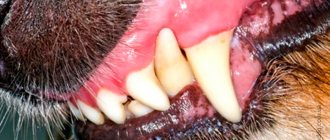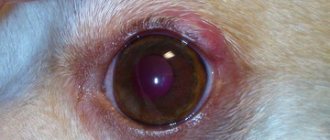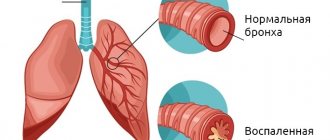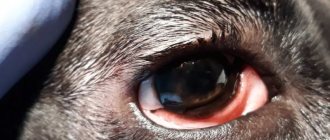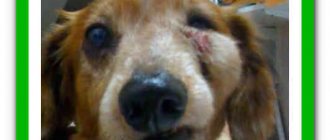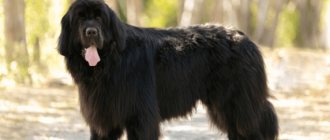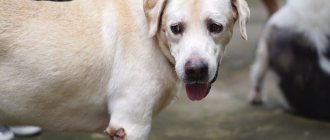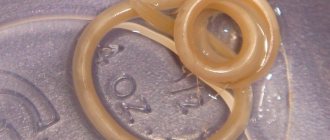Hip dysplasia in dogs is being reported more and more often. Dogs of large breeds or those with a large body weight are most susceptible to it, since it puts a strain on the musculoskeletal system. Joints also wear out due to excessive physical activity. What is dysplasia, how does it manifest itself and how can you help your beloved four-legged friend?
What is dysplasia
Dysplasia in dogs is characterized by degenerative changes in the hip joints. That is, they are gradually destroyed, which causes severe pain to the animal. Any movement, even the smallest one, is real torture for a four-legged family member.
You can recognize that a dog will have dysplasia at an early age. This allows treatment to begin as early as possible, which will allow the dog to remain physically active for a long time. How can you recognize that a puppy or adult dog is at risk of suffering from dysplasia?
Normally (in a healthy animal), the head of the femur fits perfectly into the socket on the pelvic bone, they are in close contact with each other. With dysplasia, the dog has a gap (empty space) between the head and the cavity. When moving, friction occurs, as a result, the articular surfaces are abraded and destroyed.
Prognosis for hip dysplasia
Considering that hip dysplasia almost always manifests itself in a severe form, it can be classified as an incurable disease in dogs. In the best case, as a result of conservative treatment or surgical intervention, a significant reduction in the symptoms of the disease can be achieved (conservative treatment is especially effective in young dogs), but such a German Shepherd will never be a full-fledged service dog.
In general, the prognosis for this disease is unfavorable, although there may be cases of normalization of the animal’s general condition as a result of complex therapy, and in young dogs, the existing pathology may return to normal during development.
Causes of dysplasia in dogs
Hip dysplasia in susceptible dogs will not be congenital; the pathology always develops after birth. But very often this disease can be diagnosed at an early age: the first suspicions from a veterinarian may arise at the age of six months, but the growth of bone and cartilage tissue ends somewhere in the year and a half.
It is during this period that one can already say for sure whether the dog has problems with the musculoskeletal system. But why does hip dysplasia occur in dogs?
The main reason for the development of hip dysplasia is genetic predisposition. At the genetic level, a tendency to pathologies of the musculoskeletal system is transmitted to the baby.
However, even if one parent has a confirmed diagnosis, this does not mean at all that the puppies will also have problems with the musculoskeletal system.
But there are also predisposing factors that can provoke the development of pathology. If you take care of your puppy from a very young age, you can avoid problems with the hip joints.
- Incorrect feeding. Most diseases are caused by improper diet of animals. If the puppy is fed only meat or milk (only protein food) or is given low-quality food, then problems with the paws cannot be avoided.
- Excess calcium and phosphorus. Yes, these microelements are necessary for a growing body; they strengthen bones and cartilage tissue. However, if you overfeed them, the bone tissue will become “oversaturated” and the cartilaginous tissue will become too dense (elasticity will be lost). And instead of a shock-absorbing effect, when running and jumping the animal harms its joints.
- Rapid or very large weight gain. Extra pounds are just an additional burden on the musculoskeletal and muscular systems. And if the dog still runs and tries to jump, then problems with the joints cannot be avoided.
- Too active training and physical activity. Especially in puppyhood or old age, when bones and joints are vulnerable.
- As the exact opposite of the previous point - low activity. If the baby doesn’t go for walks at all, and only goes outside to do his business, then his joints will definitely develop incorrectly.
- Injuries, including sprains or sprains. This is why it is so important to ensure that your baby does not run on slippery floors (or on ice outside). Cover the floors (linoleum, parquet, laminate, tile) with carpets so that the pet does not “stretch out” on the floor when it runs around playing.
How to protect your pet?
Only the absence of the disease in the parents can guarantee that the problem will not affect the animal. According to experts, mongrels do not suffer from the disease, regardless of their size. But if you cross them with a purebred dog, the risk will be higher.
The pathology can be provoked by the owner’s incorrect behavior. He allows the dog to overeat, gives him bones, and does not walk for a long time. As a result, the animal becomes overweight, which causes the first stage of dysplasia.
Intense physical activity can also be harmful, as can injuries during games or fights. Puppies easily experience dislocations and subluxations. If left untreated, the baby will soon have difficulty walking.
When keeping a pet outdoors, you must not forget about an active lifestyle. You will need to walk at least two hours a day.
Breed Predisposition
Any dog can develop dysplasia, but there is a certain predisposition. Some breeds get sick more often than others. Namely, large, massive and tall dogs, because their load on the musculoskeletal system is much more serious than that of medium or small dogs.
Dogs that have a lot of physical activity (work dogs, sled dogs) are also often affected. What kind of breeds are these? Great Danes, St. Bernards, Newfies, Shepherds, Rottweilers, Labradors and Golden Retrievers, Malamutes, divers and other representatives of the barking family.
Reasons why your pet may get sick
Possible causes of dysplasia:
- Genetic predisposition. If the parents suffer from the pathology, the puppies can also get sick. Therefore, for breeding purposes, dogs without dysplasia are selected.
- Incorrectly formulated diet. The disease appears due to a lack or excess of calcium.
- Obesity. Excess weight accelerates pathology.
- Imbalance of physical activity. There may be too many or few. This is especially common in large dogs.
- Paw injuries. The disease develops as a result of a fracture or dislocation. This happens quite rarely, and this is how dysplasia of the knee joint appears.
Symptoms
Recognizing the symptoms of dysplasia is not so difficult, but the diagnosis can only be confirmed after additional research. The most effective is x-ray. The image will show a gap between the articular surfaces of the bones or degeneration that has already begun. However, there are also visible clinical signs that the owner can notice without an x-ray.
You can suspect something is wrong if the pet begins to limp or stagger when walking (“slips” the pelvis).
- Notice how the dog runs. If he pushes off with both hind legs, then this is a signal that something is wrong with the limbs. This is considered incorrect paw placement.
- Think about it if the animal began to rest often during a walk. He runs less, plays less, and tries more and more to lie down or sit. It is noticeable that physical activity is difficult for him.
- There was some stiffness in movements. For example, going down and up the stairs), and sometimes getting up from the floor has become extremely difficult. Even lifting a dog's paw becomes a difficult task.
- The dog lies down unusually, spreading its sore legs in different directions. In addition, it is noticeable how the load is transferred from damaged limbs to healthy ones. Therefore, healthy paws become more massive (due to the fact that all the work is redistributed to them), but sick paws, on the contrary, “lose weight”, the muscles atrophy.
- With hip dysplasia, the affected joints swell, swell, and become extremely painful when touched and palpated.
Risk group
Dysplasia of the hip joint and joint
Predisposed breeds:
- German Shepherd;
- Labrador Retriever;
- Golden retriever;
- Saint Bernard;
- Rottweiler;
- basset hound;
- Bernese Mountain Dog;
- Newfoundland;
- and other large and giant breed dogs.
Risk factors are rapid increase in body weight, rapid growth, food with high energy value, and excessive exercise beyond age.
Retinal dysplasia
Predisposed breeds:
- Australian Shepherd;
- American Cocker Spaniel;
- English Springer Spaniel;
- collie;
- Labrador Retriever;
- Samoyed;
- Akita;
- bullmastiff;
- Yorkshire Terrier;
- rottweiler
Acquired infections may be risk factors.
Follicular dysplasia
Predisposed breeds:
| FD associated with color | FD black hair | FD unrelated to color |
|
|
|
Atrioventricular valve dysplasia
Predisposed breeds:
- Great Dane;
- German Shepherd;
- Labrador Retriever;
- Old English Sheepdog.
Treatment of a dog with dysplasia
Treatment of dysplasia in dogs should begin as early as possible. There are 2 main types of therapy: surgical and drug. And only the veterinarian should decide how to treat the patient. The degree of damage, the age of the animal, and its weight are taken into account.
With conservative treatment, the veterinarian prescribes chondroprotectors (accelerating the restoration of cartilage tissue), antispasmodics (to reduce pain), anti-inflammatory drugs, vitamins and nutritional supplements that accelerate tissue restoration. It is imperative to review the diet and, if necessary, put the dog on a diet so that he loses excess weight.
Physiotherapy helps relieve pain, relieves inflammation, and helps restore cartilage tissue faster. It is good to massage (only a professional should do this so as not to harm the dog). Both swimming and very careful slow running are good as physical therapy. However, active running and any jumping should be immediately prohibited.
If therapy is powerless or the degree of damage is so severe that no medications or physical procedures will help, then the veterinarian will recommend surgery. Just be sure to take an x-ray before it to assess the severity of the pathology.
Surgery will help correct the size of the articular surface so that the bones fit together perfectly.
There are 3 ways out of the situation: excision of the head and neck of the femur, osteotomy (changing the articular fossa so that the bone “fits” into it) and endoprosthetics (titanium prosthesis). In any of the above cases, long-term rehabilitation is necessary, but after it the dog does not experience the slightest discomfort and happily runs and jumps.
Pet care
To live a full life you will need proper care. It is worth taking your dog away if it plays too actively with other dogs. Long walks can harm her - it is better to take her out several times, but not for long.
After surgery, special care must be taken in the postoperative period. It is necessary to use medications to alleviate the condition.
Ortolani test
When Ortolani signs can be detected in an animal that is not sleeping, the animal has hip dysplasia. When the sign can be detected while the animal is under anesthesia, the animal is most likely to have dysplasia, but not all animals will be able to detect dysplasia radiographically (that is, while the animal is awake, the muscles can compensate for joint weakness and stabilize the joint.
Thus, these animals do not have secondary changes caused by hip dysplasia. In these animals, a positive Ortolani sign under anesthesia may be present even at the age of 6-7 years). If no muscle compensation occurs, Ortolani signs gradually disappear as the capsule thickens and osteoarthritis develops. The Ortolani sign is pathological in all adult dogs.
- The Ortolani sign is not an indicator of the severity of dysplasia.
- When a triple pelvic osteotomy is performed to correct hip dysplasia, the Ortolani sign can be used as a guide to determine the degree of rotation required.
Diagnosis of the disease
It is possible to diagnose the exact degree of hip dysplasia in a German Shepherd only after a year.
For a correct diagnosis of the disease, it is necessary to conduct an X-ray examination. It can only be performed in a certain position. To do this, you need to completely calm the dog - general anesthesia.
To get a high-quality x-ray, you should follow several rules:
- on the day of diagnosis, you need to give the shepherd a good walk;
- You cannot feed the dog before the photo is taken;
- X-rays should not be taken when the bitch is in heat;
- X-rays are contraindicated for pregnant and lactating bitches.

